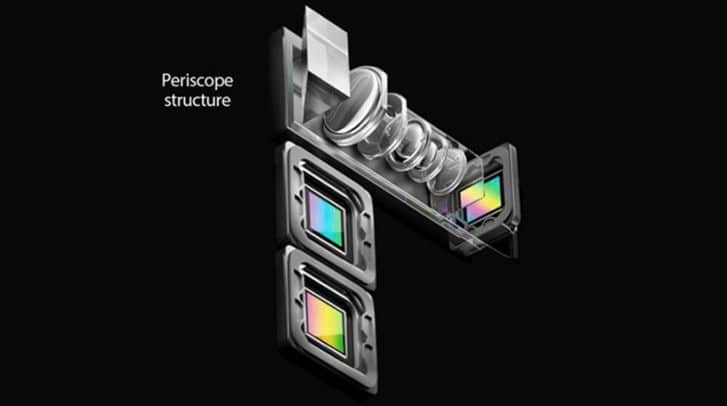The evolution of smartphone camera sensors has been a remarkable journey, marked by advances in technology, shrinking camera sensors, and increased consumer demands for better photography capabilities.
Below is a brief overview of all the key stages in the evolution of smartphone camera sensors:
The first cameras
At the beginning of the decade of 2000 the first smartphones with built-in cameras appeared. These cameras had very low resolutions (often around 0,3 to 1 megapixel), and produced poor quality images.

The Megapixel Race
Since his mid-teens 2000 to the early 2010s, smartphone manufacturers began to compete with each other on the megapixels of camera sensors, trying to offer higher resolutions. During this time, we saw the transition from sensors below 5 megapixel in sensors of 8, 12MP and eventually even 16 megapixel. However, higher megapixel sensors alone do not guarantee better image quality due to limitations in sensor size and technology.

Focus on image quality
Manufacturers began to focus on improving image quality and not just increasing the number of megapixels. This led to the introduction of technologies such as backlight sensors (BSI), which allowed more light to reach the sensor, resulting in better low-light performance and image quality.
Dual and triple cameras (late 2010s)
In the late 2010s, manufacturers began incorporating multiple camera sensors into smartphones. Dual camera setups became commonplace, offering features such as optical zoom, depth detection and improved low light performance. Some Smartphone manufacturers have even adopted triple camera setups, adding Ultra Wide lenses on their devices.
Better support through software
In the late 2010s until now, Smartphone manufacturers focused more on better support through software, making more use of the features and processing power of Chipsets, creating special Ai algorithms to improve image quality. Features such as portrait mode (simulating background blur), night mode (taking better photos in low-light conditions) and HDR (multi-exposure combination) have greatly improved the overall photography experience on Smartphones.
Periscope lenses and foldable Smartphones
From the fees of the 2010s until now, to achieve greater optical zoom without increasing the thickness of the phone, some manufacturers first introduced new periscope-style camera systems, which use mirrors to redirect light.
Additionally, with the advent of the first foldable smartphones, new challenges and opportunities arose for camera placement and functionality.
Big sensors
From 2020 decade and then some Smartphone manufacturers started increasing the number of megapixels the sensors have again, but this time the sensors have large physical dimensions at the same time. Larger sensors allow for better light capture and improved dynamic range, contributing to overall better image quality.
Cameras under the screen
The 2020s brought a new innovation that includes the integration of the front Selfie camera under the screen, eliminating the need for unsightly notches and ugly Notches on device screens. Although this technology is still in its early stages, it has the potential to bring a truly full-screen experience to Smartphones.
Sensor Offset Stabilization (OIS)
The 2020s brought yet another important feature that is inspired by the traditional lens systems that DSLR cameras have. So sensor shift stabilization also known as OIS was introduced in some smartphones. This technology helps neutralize hand movements and vibrations, resulting in smoother video and sharper photos.
Ai's rebel on camera
Η artificial intelligence (Ai) continues to play an important role in improving smartphone photography. Ai-powered features include scene recognition, image enhancement, and even real-time language translation through the camera app.

The evolution of smartphone camera sensors continues to be driven by a combination of hardware developments, software innovations and user demands. As technology evolves, we can expect even more exciting developments in Smartphone photography.
 Do not forget to follow it Xiaomi-miui.gr on Google News to be informed immediately about all our new articles! You can also if you use RSS reader, add our page to your list by simply following this link >> https://news.xiaomi-miui.gr/feed/gn
Do not forget to follow it Xiaomi-miui.gr on Google News to be informed immediately about all our new articles! You can also if you use RSS reader, add our page to your list by simply following this link >> https://news.xiaomi-miui.gr/feed/gn
Follow us on Telegram so that you are the first to learn our every news!











